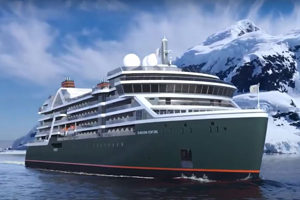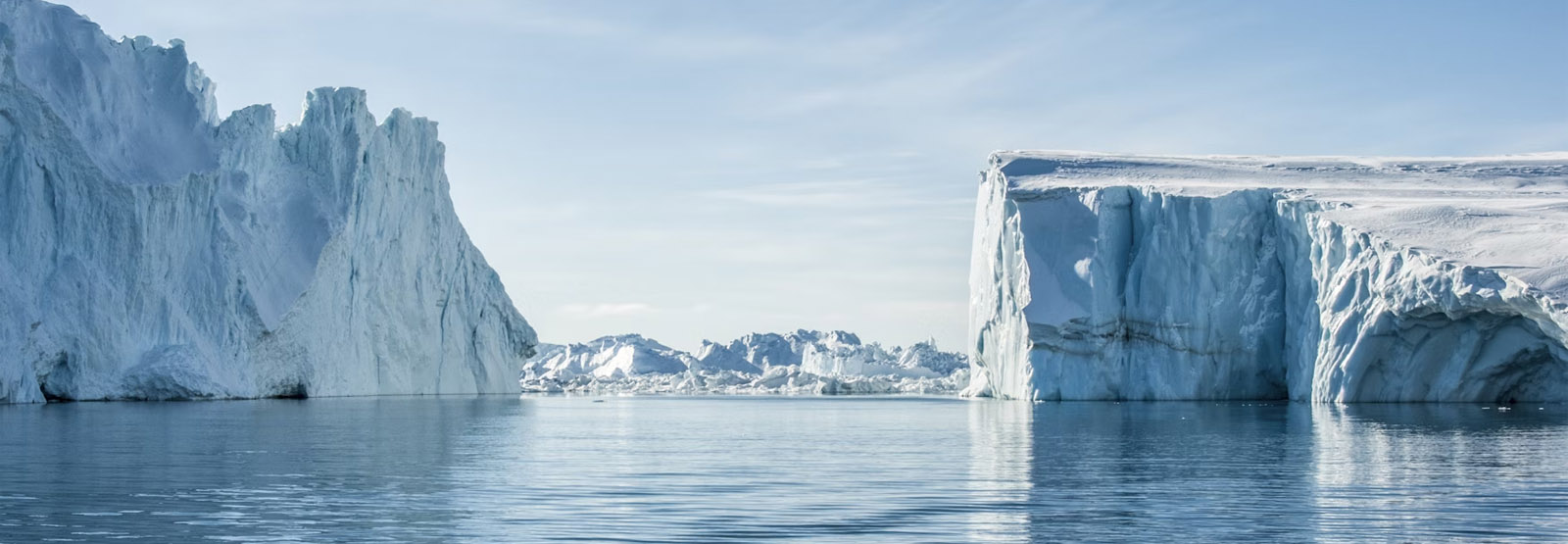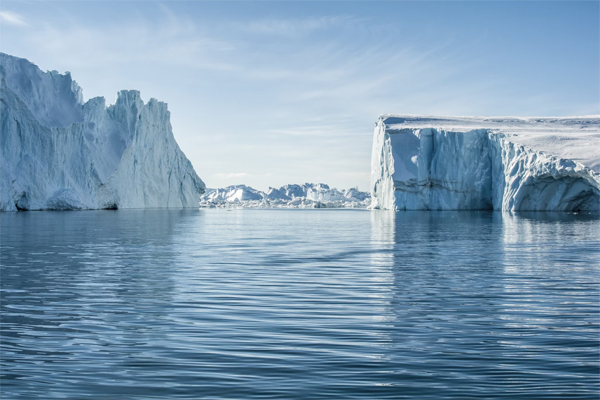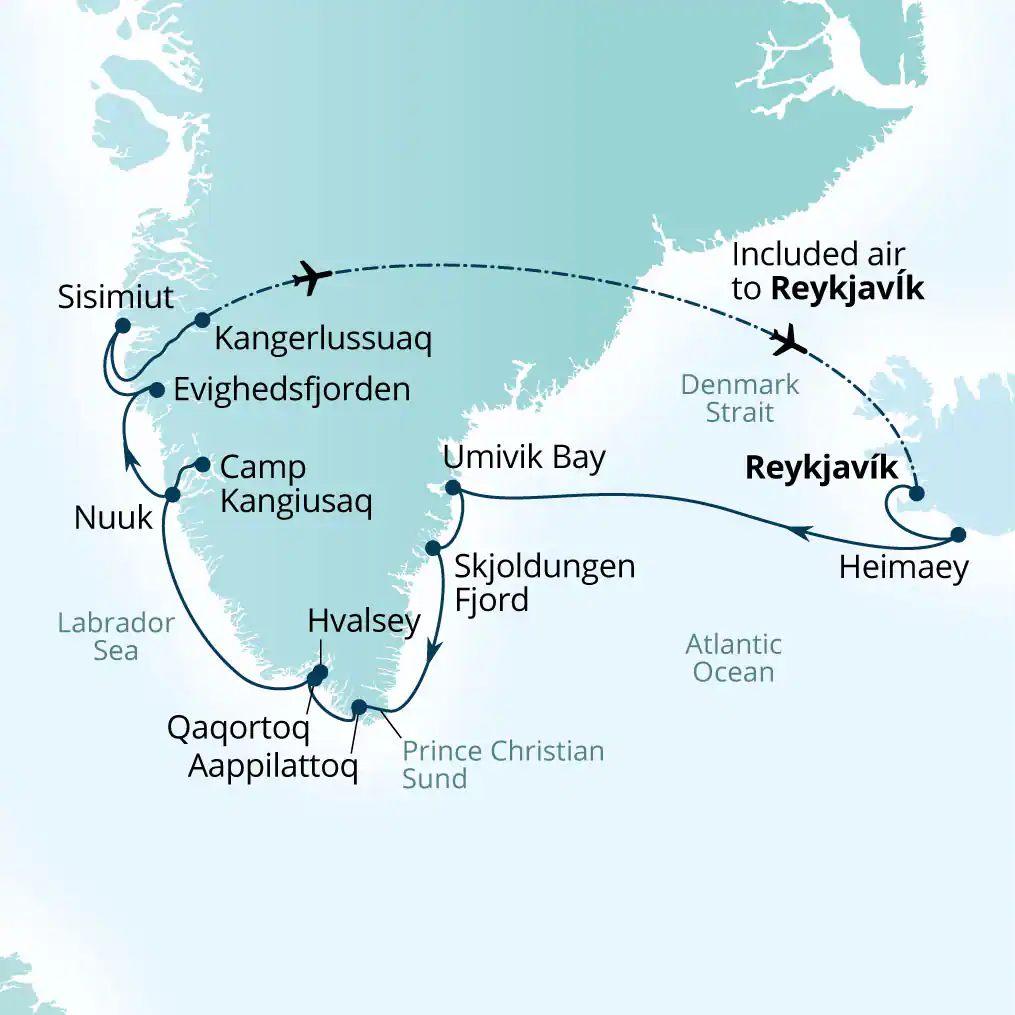DATES / RATES
Rates are listed per person
|
| Start Date | End Date | From EUR | From USD |
|---|
| Jul 26, 2025 | Aug 08, 2025 | 10,696 |
12,149 |
Rates are listed per person
|
| Start Date | End Date | From EUR | From USD |
|---|
| Jul 26, 2025 | Aug 08, 2025 | 10,696 |
12,149 |
ITINERARY
Day
0 : Reykjavik, Iceland
Reykjavík, established by Viking settler Ingólfur
Arnarson around 870 C.E, is the location of the first permanent
settlement in Iceland. The census of 1703 recorded that
Reykjavík had 69 residents and consisted of a farm and a
church. The impressive statue of Leif Erikson, in the center of town,
reminds all of Iceland’s Viking heritage. Its name translates
to ‘smoky bay’, due to the geothermal nature of the
surrounding area.
Today about 200.000 people live in the Icelandic capital, roughly 60%
of the country’s population. It has evolved into a
sophisticated city. The northernmost national capital in the world is
also one of the cleanest, greenest, and safest on Earth.
Walking Reykjavik streets one will find rich culture, history, music,
shopping and in the late hours vibrant night-life. Colorful rooftops
and the elegant spire of Hallgrímskirkja Church dominate
Reykjavik’s skyline. Known for its arts, Reykjavik hosts a
number of internationally recognized festivals, notably the Iceland Air
music festival, Reykjavik Arts Festival and the Reykjavik International
Film Festival.
Day
1 : Heimaey, Westman Islands, Iceland
Heimaey
Island is the largest in the Westman Islands located four miles off the
south-west coast of Iceland. One of the most visually impressive
islands in Iceland, it is ringed by tall, vertical sea cliffs many
hundreds of feet high. Heimaey is also the home to over eight
million Atlantic puffins, more nesting puffins than anywhere else on
earth. A local story tells that puffin chicks, taking their first
flights at night, often become stranded in the village streets, where
the local children rescue them and set them free the next day.
In January of 1973 the island received the nickname, ‘Pompeii
of the North’ when a volcanic eruption and lava flow
destroyed half the town. This caused a crisis when the town’s
only harbor was nearly blocked by advancing lava. Nowadays it is a
lively place with a vibrant culture and over four thousand residents.
Archaeological excavations suggest that people lived on Heimaey as
early as the 10th Century.
Day
2 : Days At Sea
Day 3 : Umivik Bay, Greenland
On the King Frederick VI Coast of Greenland’s
southeast quadrant, the semi-circular Umivik Bay is carved out just
north of the Denmark Strait. Unlike the sheer cliffs and rugged terrain
presented by much of the coastline, the shores inside the bay are
smooth and the massive Greenland Ice Sheet comes right down to the
shore in undulating slopes. This profile persuaded Fritjof Nansen to
select the bay as the starting point of his successful 1888 expedition
to cross Greenland over the ice sheet. There are several large islands
in the bay, including Uppernattivik Island smack in the middle. There
are calving glaciers to survey and a landing is possible here as well.
Day
4 :Skjoldungen Fjord, Greenland
Imagine
a narrow fjord bordered by rugged peaks, vertical rock walls and
serpentine rivers of ice plunging into the sea. This is Skjoldungen
Fjord, named by Wilhelm August Graah after the honorific title
Skjoldungen which, according to Norse mythology, was given to
successors of legendary King Skjold to the Danish throne.
Numerous tidewater glaciers calve during the summer, releasing large
chunks of ice that plunge into the fjord. Above, huge crevasses and
free-standing pillars of ice, known as seracs, are silhouetted against
a blue Greenlandic sky. Barren of large trees, Skjoldungen Fjord is
carpeted in colorful dwarf birch and willow forests that may grow
several feet high, as well as a variety of low-growing Arctic
wildflowers.
This fjord was likely inhabited by Paleo-Eskimo (Inuit) nomadic people
as early as 4,000 years ago. Archaeological remains of later historical
periods, such as Thule culture graves, have also been found, indicating
that Inuit people have lived in the area continuously. Scattered within
this stunning scenery are remains of more recent abandoned Inuit
dwellings along the fjord’s western shores.
Day
5 :Cruising Prince Christian Sound
The
transit of the Prince Christian Sound is one of the highlights of
cruising in Greenland. The approximately 60-mile sound cuts between the
mainland and an archipelago of islands from east to west, under the
southern edge of the massive Greenland Ice Sheet, which covers 80
percent of the island. The sound is narrow, sometimes as little as 1500
feet across, and numerous glaciers reach the sea on its shores, calving
icebergs into the sound. High, barren and sharply defined peaks tower
on both sides. The only indications of humanity to be seen are the
Ikerassasuaq weather station (using the Greenlandic name for the sound)
where the ship enters, and the small village of Appilattoq, housing
approximately 100 people. Animal life is more abundant, with minke, fin
and blue whales seen frequently, as well as ringed and bearded seals
that haul out on the floating ice. It is a breathtaking display of
natural splendor in the severe, rugged vernacular of rock, ice and sea
that is unique to the arctic realm.
Day
5 : Aappilattoq, Greenland
Tiny
Aappilattoq is located in the Prince Christian Sound at
Greenland’s southern tip, in the municipality of Kullaleq.
Its name means ‘red’ in Greenlandic. The sound is
enfolded by steep, unglaciated mountains, rising sheer from the water
to sharp, shattered peaks. The town’s setting is particularly
picturesque, its brightly painted houses scattered across a small
peninsula of humped granite domes, under a backdrop of a looming
pyramid of stone. The little red town church nestles next to a
white-picketed graveyard. The sound itself is dotted with icebergs
slowly melting into expressionist sculptures. It is a place where the
infrequent visitors routinely fill their camera cards with
unforgettable images of Greenland’s spectacular visual
splendor.
Day 6 : Qaqortoq, Greenland
Qaqortoq
is the largest city in Southern Greenland with 3,300 inhabitants. The
town rises steeply above the natural small-boat harbor with its fish,
shrimp and fur processing plants. It was founded in 1775 by the
Dano-Norwegian trader Anders Olsen, working on behalf of the General
Trading Company.
Qaqortoq is best known for its open-air art exhibition. The Stone
& Man project, designed to transform the town into an outdoor
gallery, had the participation of 18 Nordic artists from Iceland,
Sweden, Norway, Finland and Greenland. Initially 24 stone sculptures
were created using the existing rock faces and boulders in the town.
Now there are over 40 sculptures celebrating Greenlandic culture.
Other points of interest include Mindebrønden, the oldest
fountain in Greenland, the Qaqortoq Museum and The Saviors Lutheran
Church. Eighteen kilometers northwest of town are the famous remains of
the Viking church of Hvalsey. It represents the last written record of
the Greenlandic Norse, who attended a wedding there in A.D. 1408.
Hvalsey is the most prominent Norse site in Greenland.
Day
6 : Hvalsey, Greenland
Twelve
miles by Zodiac up the Hvalseyjarfjord from Qaqortoq, the largest
community in South Greenland, lies the most prominent Norse
archaeological site in Greenland. The so-called Eastern Settlement
lasted from the 10th until the mid-15th century. Your expedition team
archaeologist can interpret for you the ruins of the great halls and
church at Hvalsey that hint of a prospering medieval farmstead. The
site evokes an era when the Norse were trading with the indigenous
Thule people of the area for furs and ivory, which were a prized
commodities in Europe. A wedding held in the church in 1408 comprises
the last written record of the Norse adventure in Greenland. Within a
few years, Hvalsey and the rest of other Norse communities of Greenland
withered as immigrants returned to the more established communities in
Iceland and Norway. The site’s meadows of wildflowers sloping
up from the fjord give a sense of the peaceful community that existed
here in that long-ago summer.
Day
7 : Days At Sea
Day
8 : Nuuk (Godthab), Greenland
Greenland’s
capital Nuuk, is a city of vitality and Greenlandic culture.
It’s here that old traditions and modern influences combine
to create a diverse population. Nuuk is the home of the University of
Greenland with its 650 students and the Greenland National Museum with
is its extensive historical archives and cultural displays. Also of
interest are the Nuuk Art Museum and the Kayak Museum. The Art Museum
holds a body of 300 paintings primarily featuring the work of traveling
European artists, while the Kayak Museum houses a very impressive
collection of sealskin kayaks and traditional hunting artifacts. The
modest wooden frame of the Nuuk Cathedral, built in 1849, is a
recognizable landmark on Nuuk’s skyline.
The site of Nuuk was occupied as far back as 2,200 B.C.E. by ancient
pre-Inuit peoples from Canada. It was settled again in the 10th century
by Viking explorers. The current city was founded in 1728 by Danish
missionary Hans Egede. A statue of Egede stands adjacent to the
cathedral.
Day 9 : Camp Kangiusaq,
Greenland
Day 10 : Evighedsfjorden, Greenland
Set against the breathtaking backdrop of the majestic
Evighedsfjorden in Greenland, Seabourn's ultra-luxury cruises offer
passengers an unparalleled opportunity to immerse themselves in the
awe-inspiring beauty of the Arctic. Carved by ancient glaciers, this
fjord's towering cliffs and crystalline waters create a dramatic
setting for unforgettable adventures. As the ship navigates through the
icy waters, passengers are treated to breathtaking views of snow-capped
peaks, cascading waterfalls, and pristine glaciers. Wildlife
enthusiasts can spot Arctic animals such as seals, whales, and seabirds
thriving in their natural habitat. Guided excursions allow guests to
explore the fjord's hidden coves, hike along rugged coastal trails, and
witness the mesmerizing spectacle of calving icebergs.
Day
11 : Sisimiut (Holsteinsborg), Greenland
Located
24 miles (40 km) north of the Arctic Circle, Sisimiut is
“rough, real and remote.” These three words cut to
the core of Sisimiut’s reputation as an outdoor
adventure-travel hub. It’s the second-largest city in
Greenland with 5,600 inhabitants and was founded in 1756 under the
leadership of the Danish missionary, Hans Egede. The name is
Greenlandic meaning ‘place of fox dens.’
The area has been inhabited for 4,500 years, first by the Inuit peoples
of the Saqqaq culture, Dorset culture, and then the Thule people, whose
descendants comprise the majority of the current population.
One of the most picturesque towns in Greenland, Sisimiut is
set in a tranquil fjord perched on bare outcrops of rock. Mount
Nasaasaaq, 2,572’ (784 m) tall, is the backdrop for the town,
where colorful houses of bright red, yellow, green and blue stand out
in stark contrast to a landscape of gray and white. The Sisimiut Museum
hosts a traditional Greenlandic peat house and the remains of an 18th
century kayak.
Day
12 : Kangerlussuaq, Greenland
In
October, 1941 the United States Army Air Force constructed an airbase
at the site of Kangerlussuaq. It served as a refuelling stop for
single-engine military aircraft being flown to Britain during World War
II. From their last port of call, Goose Bay, Labrador, it was 1,600
kilometers (1,000 miles) to Kangerlussuaq until they could refuel.
Kangerlussuaq fjord (‘Big Fjord’), is 170
kilometers (105 miles) long and was often shrouded in fog, providing a
serious navigation problem for those aircrews.
Today, with the use of modern technology, navigation is no longer an
issue. The landscape was ideal for the site of an airport. A large
alluvial plain, deposited by the nearby glacial-outflow river, provided
a perfectly flat environment for an airport. Kangerlussuaq is the
largest commercial airport in Greenland and supports a population of
500. A little known fact, from 1971 to 1987, 33 missiles from various
countries, were fired from Kangerlussuaq for upper atmospheric
scientific research.
Day
12-13 : Reykjavik, Iceland
Reykjavík,
established by Viking settler Ingólfur Arnarson around 870
C.E, is the
location of the first permanent settlement in Iceland. The census of
1703 recorded that Reykjavík had 69 residents and consisted
of a farm
and a church. The impressive statue of Leif Erikson, in the center of
town, reminds all of Iceland’s Viking heritage. Its name
translates to
‘smoky bay’, due to the geothermal nature of the
surrounding area.
Today
about 200.000 people live in the Icelandic capital, roughly 60% of the
country’s population. It has evolved into a sophisticated
city. The
northernmost national capital in the world is also one of the cleanest,
greenest, and safest on Earth. Walking Reykjavik streets one
will find
rich culture, history, music, shopping and in the late hours vibrant
night-life. Colorful rooftops and the elegant spire of
Hallgrímskirkja
Church dominate Reykjavik’s skyline. Known for its arts,
Reykjavik
hosts a number of internationally recognized festivals, notably the
Iceland Air music festival, Reykjavik Arts Festival and the Reykjavik
International Film Festival.
Seabourn Venture (Luxury Expedition, 264-guests)
Seabourn Venture is Seabourn's ultra-luxury purpose-built expedition ship. The ship features 132 all veranda, all ocean-front suites. The ship is built for polar environments (PC6 Polar Class standards) with a brand new innovative design, created specifically for the ultra-luxury expedition traveler. There are two custom-built submarines onboard, providing an unforgettable view of the world beneath the ocean's surface. The ship is also designed to carry a complement of double sea kayaks as well as 24 Zodiacs that can accommodate all onboard guests at once.
 (Click image to view Ship details)
(Click image to view Ship details)
WHAT'S INCLUDED
Please Call Us to find out what is included in the fare
ADVENTURE
OPTIONS
- Hiking
- Kayaking
- Cultural
Tour
- Zodiac
Cruising
- Submarine







